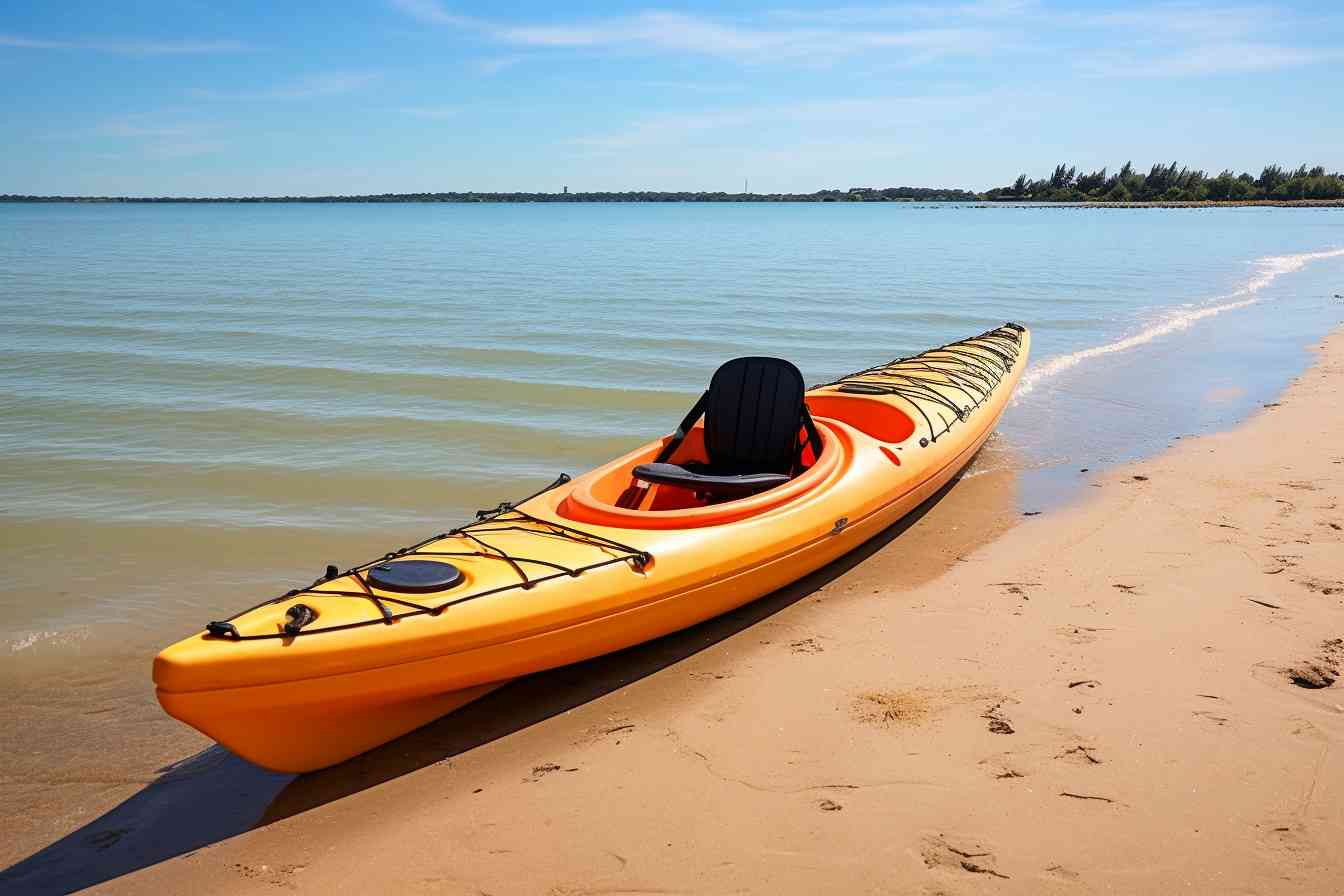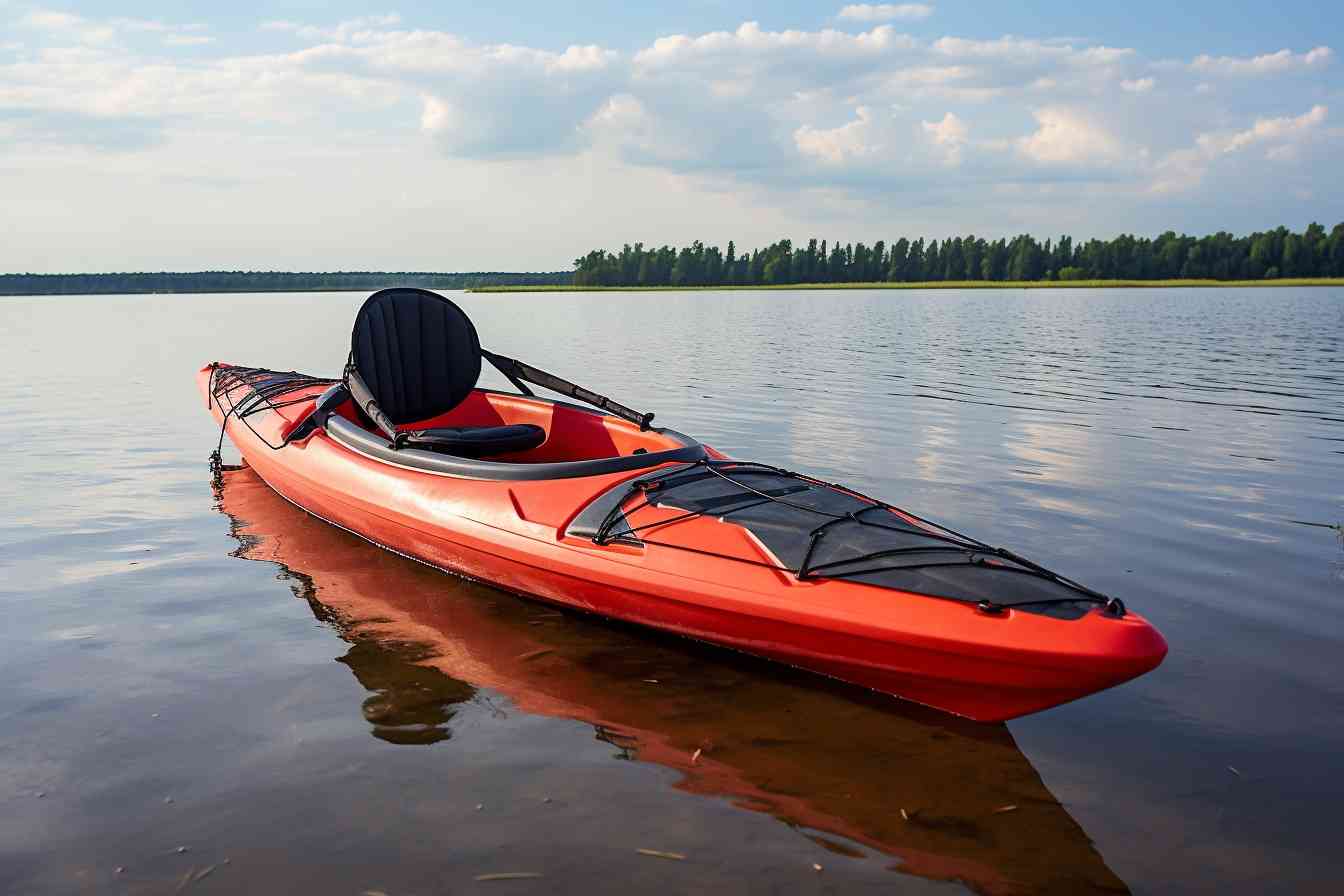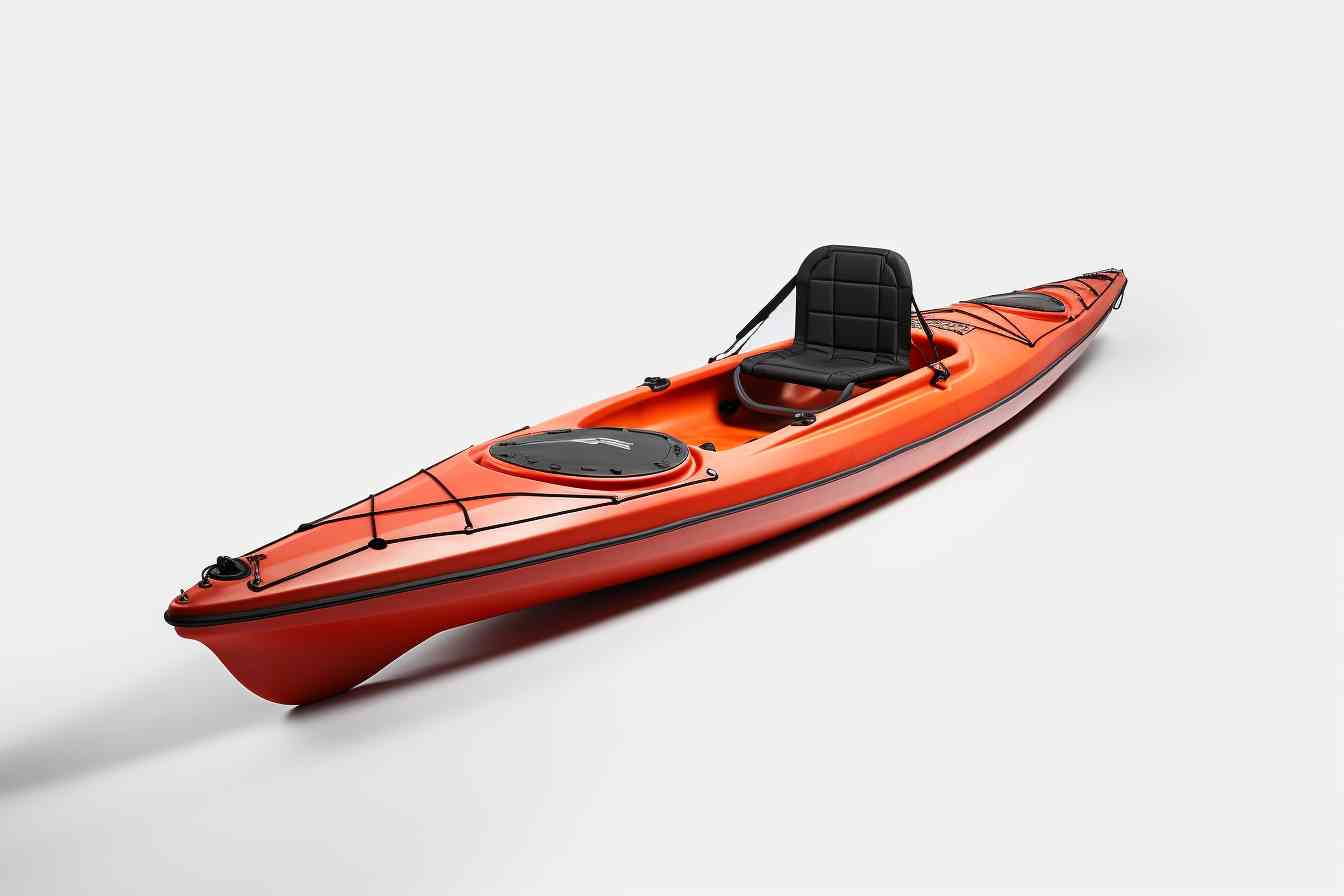Intro: What Size Kayak Do I Need

Before we get into the nitty-gritty, let’s address the burning question – what size kayak do I need? Now, this isn’t a one-size-fits-all situation. Your perfect kayak size relies on multiple things, like your body size, what you plan on using it for, and how experienced you are.
So, if you’re a beginner, a shorter, wider kayak might do you good. They’re really steady, and they turn easily – perfect for getting the hang of the ropes without feeling like you’re gonna flip at any moment. But if you’re a seasoned kayak veteran, you’ll probably want a long, narrow beauty. They’re faster and have more cargo space, although they might take some effort to turn.
Ah, and what about waters? Are you gonna kayak on serene lakes or rough seas? If you’re going for the former, a shorter kayak might work. They’re easier to control and, let’s be honest, you’re not exactly racing against anything! But if you’re taking on the seas, consider a longer kayak – they handle choppy waters better. Not to mention if you’re planning overnight trips, you could use the extra storage space!
Looks like I got a little carried away – but hey, these are some necessary insights. Remember, it’s not just about whether that shiny kayak fits in your garage. It’s about the perfect blend of safety, control, speed, and comfort. So, next time you wonder, “what size kayak do I need”, you know what to consider!
How Do I Choose The Right Size Kayak?

So, you’re wondering “What size kayak do I need?” A darn good question, friend, and one that’s crucial to your kayaking experience. Picking the right size — it’s not just about your height and weight, but also about your paddling skills, the type of water you’ll be navigating, and even the gear you plan to bring along.
Firstly, let’s talk about length. Typically, kayaks range from around 10 to 16 feet long. The longer ones often offer more speed and stability, especially in rough water. But remember – they can be dang hard to maneuver! Shorter kayaks, by contrast, are easier to handle, although they might not fare as well in choppier waves.
Now, onto width. If you’re new to this game or you’re a bit shaky on balance, go for a wider kayak. They tend to stay put and don’t tip so easily, the perfect choice for beginners. Experienced paddlers, though, might prefer a narrower design. It can give a more streamlined, agile ride.
Then there’s depth. Ah yes, depth. You need to fit comfortably inside the kayak, right? And that’s where depth comes into play. Taller folks or those with long legs should look for kayaks with a bit more depth.
Finally, consider the load capacity. Going on a long expedition and need to pack a hefty load of gear? Or just stashing a cooler for some fresh catch? Make sure your kayak can handle it!
Alright, I’ve said a mouthful here, but it all boils down to this: The right-size kayak for you balances comfort, performance, and suitability for your planned activities. Keep in mind, you might need to try out a few before you hit the sweet spot. Now, go get paddling!
What Size Kayak Do I Need For Beginners
Boy, picking out a kayak for the first time is a daunting task, I remember when I was in your shoes. Below are a few points to consider when choosing the right sized kayak if you’re just starting out:
-
Consider weight capacity: Every kayak has a weight limit that it can handle. Make sure you choose a kayak that can comfortably carry your weight plus any extra gear you’ll be toting onboard. Even in calm waters, overloading the yak can spell trouble, especially for a novice.
-
Think about the kayak’s length: Longer kayaks tend to track better – that’s a fancy way of saying it moves straighter – and they usually have more storage space. However, they’re tougher to maneuver than their shorter counterparts.
-
Width is important too: Wider kayaks offer more stability – wouldn’t want to take a spill, right? – but they’re slower than narrower models. As a beginner, you’ll probably prefer a more stable boat until you get your sea legs.
-
Seat of the pants: The cockpit size plays a role in how comfortable you’ll be while paddling. Smaller cockpits provide more control but can feel confining while larger ones give you room to move around but you’ll sacrifice some control. I’d say find a happy middle ground here.
-
Kayak’s purpose: Are you angling for fishing trips or just cruising around for the fun of it? Different sizes lend themselves better to different activities. So, consider your intended use before making your choice.
Trust me, once you find the perfect fit, there’s nothing like the freedom and the fun you’ll have paddling around in your very own kayak. You’ll see! Now, get out there and start looking for your perfect yak match. Happy kayaking!
How Big Of A Kayak Do I Need For My Weight?

I’m all for kayaking, and I bet you are too if you’re reading my thoughts here. It’s a blast, isn’t it? But finding the perfect one, oh boy, that’s a task. Now you’ve asked a great question, “” Well, the answer isn’t quite as simple as one might hope, but don’t fret, I’ve got you covered!
Before we leap into anything too yonder, let’s acknowledge this – size DOES matter. It’s crucial, actually. Most kayaks have a weight capacity listed on them, and this is often the first thing one should consider. However, to put it crassly, it’s not just about if you’ll sink or swim.
The size of your kayak should not only accommodate your weight but also provide stability, comfort, and, importantly, safety. The wider and longer a kayak is, the more stable and weight-bearing it would be. But remember, larger kayaks might be less maneuverable in certain situations, and also a bit of a hefty lug to transport.
A general rule of thumb, for a solo kayaker weighing up to 250 pounds, you’d want to look at a kayak that’s about 12 feet long. 12-15 feet should do the trick for heavier paddlers or those with lots of gear. Those particulars might vary depending on the waters you’ll be venturing into, though. Coastal or choppy adventures may require yu to opt for something more robust.
Being a savvy kayaker involves knowing these nuances like the back of your hand. But it’s not just about being smart, it’s about enjoying the wave-embraced voyage you’re embarking upon. Isn’t that what kayaking’s all about? So grab that lifejacket, find the right boat, and paddle off into the horizon! Don’t worry, You’ve got this covered!
What Size Kayak Do I Need Calculator
Though it is not a literal calculator, there are several variables to consider when determining what size kayak you’ll need. And it’ll be handy to keep these pointers close by while completing the task.
-
Body Weight: Your body weight is a significant factor when choosing a kayak size. Typically, larger kayaks can support more weight, and smaller kayaks could likely do just fine for riders under 150 pounds. Remember, don’t push the limits—it’s always safer to lean towards a larger kayak if you’re on the border between models.
-
Kayaking Encounter: The type of kayaking experience you’re planning should affect your decision. If you’re going for a leisurely trip on a calm lake or river, a shorter, wider kayak would do. However, if you plan to brave choppy waters or ocean waves, a longer, narrower kayak will suit you best.
-
User’s Height: The paddler’s height is a factor to consider. Taller paddlers may feel more comfortable in larger kayaks, while shorter paddlers may prefer smaller models.
-
Storage and Transport: You need to consider how you’ll transport and store your kayak. If you’re limited on space, a smaller kayak might be a better choice. On the other hand, if you have ample cargo room and storage, you can go for the larger ones.
-
Frequency of Use: If you plan on kayaking frequently, you may want to invest in a larger, more comfortable kayak. These models typically provide a smoother ride and better tracking in the water. If, however, you plan on kayaking occasionally, a smaller model should suffice.
-
Budget: Larger kayaks typically come with a larger price tag. Hence, your funds available for investment should be taken into account. Nonetheless, never sacrifice safety and appropriate size for price.
In the final analysis, there isn’t a one-size-fits-all rule when selecting the ideal kayak size—each person’s needs and circumstances are unique. I trust these pointers have provided some insights and direction about the factors to consider when choosing your kayak size. Happy kayaking!
Is An 8 Foot Kayak Too Small?

So, you’re wondering, is an 8 foot kayak too small, huh? Well, let’s pry into this. First and foremost, it’s crucial to recognize that the size of the kayak you need really hinges on a few elemental factors— your body size, the kind of paddling you plan to do, and where you intend to paddle. If you’re someone of a smaller stature and plan to mostly paddle in calm and serene waters like small lakes or flat-water rivers, an 8 foot kayak might just strike the right chord.
However, I’ve got to admit, an 8 foot kayak is comparatively small and it does have its snags. You might find that it doesn’t track (stay straight) as well as longer kayaks while padding, and it could be more sensitive to movements, which might pose a bit of a nuisance for novices. It’s also not outfitted for storing heaps of gear, so if you’re planning a multi-day excursion, it’s probably not gonna serve you well.
To capsulize, there’s no hard and fast rule as to what size kayak you need. It can flit from one person to another, all dependent on individual needs and circumstances. An 8 foot kayak isn’t inherently ‘too small,’ but it is conspicuous for certain uses and paddlers, so it’s best to keep that in mind!
Is A 12 Foot Kayak Good For Beginners?
So you’re pondering, “” Well, lemme tell you, it’s a good bet! A 12-foot kayak is generally an excellent choice for newbies due to its inherent stability. These medium-sized vessels offer a happy compromise – they’re small enough for beginners to handle, but large enough to afford a range of activities.
Having a 12-foot kayak means you get a more stable and easy-to-control vessel. That’s because these boats often come with a wider beam, which translates to a more balanced kayak. That’s great news for beginners because you won’t have to worry about capsizing every time you move. Believe me, no one wants a sudden, unexpected dip in the lake or river when you’re learning the ropes!
What’s more, indulging in a kayak of this size often gives you more storage space for gear. Perfect if you’re planning those long, lazy, summer day trips where a picnic is a non-negotiable. Imagine munching on your favorite sandwich in the middle of a serene lake… sounds delightful, doesn’t it?
However, these mid-sized kayaks may lack the quick maneuverability of their smaller counterparts. So, if you’re intending to try out those narrow creek or river runs straight off, you might find your 12 footer a bit of a handful. But fear not! Practice is key, and in no time you’ll find yourself handling your kayak like a pro.
Remember, kayaking is an adventure and part of the thrill is figuring out what works best for you. Just because a 12-foot kayak is ordinarily a good fit for beginners, it might not be the perfect match for you. And that’s perfectly fine! In the end, it’s all about finding a kayak that suits both your physical capabilities and adventurous spirit. Happy paddling!
Final Verdict
Alright, so you’re wondering, “what size kayak do I need?” Well, it’s important to remember that there’s no one-size-fits-all answer. Your ideal kayak size depends on a variety of factors, including your physique, your paddling skills, and your intended use for the kayak.
If you’re a beginner paddler, a larger, wider kayak will offer the stability and reassurance you need as you get your sea legs (or should I say, sea arms?). They tend to be more forgiving, giving you a chance to perfect your paddle strokes without worrying too much about falling into the drink.
For experienced paddlers seeking speed and nimbleness, a longer, narrower kayak might be just the ticket. These sleek vessels cut through the water like a knife through butter, but they do require some skill to handle. Don’t dive into buying a long kayak unless you’re ready to balance, my friend.
As for your height and weight, that plays an important role too. Larger individuals need larger kayaks – sounds obvious, right? But many people don’t realize that kayaks have weight capacities. Exceeding the recommended weight limit can lead to unstable and potentially unsafe conditions.
Finally, what about storage and transportation? Size matters here, too! If you live in a city apartment, a smaller, lighter kayak that can be stored easily might be your best bet. Perhaps one of those fancy fold-up models that are hitting the market.
Selecting the right size kayak is a crucial decision, there’s no doubt about it. Think about your skill level, your physical size, how you plan to use the kayak, and even where you’ll keep it when not in use. It might seem a bit overwhelming now, but once you’re out on the water in the kayak that’s just right for you, you’ll find it was well worth the careful consideration. Happy paddling!
Frequently Asked Questions
What factors determine the size of the kayak I need?
Great question! The size of the kayak you need depends on several factors, including your height, weight, the type of kayaking you plan to do, and where you’ll be doing it. For instance, if you’re taller or heavier, you might need a longer or wider kayak. If you plan on kayaking in calm waters or taking leisurely trips, a shorter kayak might be fine. But if you’re planning on tackling rough waters or going on long trips, a longer kayak might be needed.
How does my body size and weight play a role in deciding on a kayak size?
Body size and weight are crucial factors when choosing a kayak. Generally, taller or heavier people need a longer or wider kayak for balance and comfort. Each kayak has a weight limit, which you should not exceed for safety reasons. A too-small kayak can feel cramped and uncomfortable, while a too-large one can be hard to manoeuvre.
How does the type of kayaking I plan to do impact the size of the kayak?
The type of kayaking you plan to do greatly impacts the size of the kayak. If you’re into recreational kayaking or fishing, a wider, shorter kayak might be suitable. On the flip side, for touring and sea kayaking, where speed & distance are the goals, you might want to look for longer, narrower kayaks. Whitewater kayaks are usually much shorter to help with manoeuvrability through rapid currents.
Does the location where I plan to kayak influence the size of the kayak?
Absolutely! If you’re planning to kayak on a calm lake or pond, a shorter and potentially wider kayak would be just fine. However, if you’re heading out to sea, you’ll need a longer and perhaps narrower kayak to handle the waves and cover larger distances.
What size of a kayak should a beginner opt for?
As a rule of thumb, beginners are usually better off starting with a shorter, wider kayak. These models tend to be more stable and easier to turn, making them perfect for building confidence on the water.
How does the hull design of a kayak impact its size and my choice?
The hull design can impact the stability and manoeuvrability of a kayak. A flat hull is stable and great for beginners, and tends to be found on wider, shorter kayaks. A rounded hull, found on longer kayaks, offers more speed and is ideal for rougher waters or long distances.
What does a kayak’s weight capacity mean and how is it related to its size?
A kayak’s weight capacity is the maximum weight it can safely carry, including the weight of the paddler and any gear or equipment. Larger kayaks usually have a higher weight capacity. It’s important to choose a kayak that can comfortably support your weight and leave enough capacity for any gear you plan to bring along.
What size of a kayak should I choose for fishing?
For fishing, a wider and stable kayak is usually recommended. This gives you a stable platform for casting and reeling in fish. The size ultimately depends on your body size, the gear you’ll be carrying, and where you’ll be fishing.
Are there any specific kayak size recommendations for kids?
Yes, kids kayaks are usually smaller, between 6 to 8 feet long. They are designed to be lightweight and easy for a child to maneuver. The best size depends on the child’s age, size, and paddling skills.
How does storage and transportation factor into my choice of kayak size?
Transportation and storage are practical considerations that should influence your choice. Larger kayaks require more storage space and can be harder to transport. If storage space or transporting the kayak is an issue for you, a smaller, inflatable kayak might be a wise choice.

